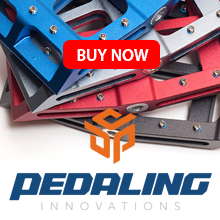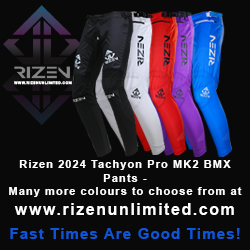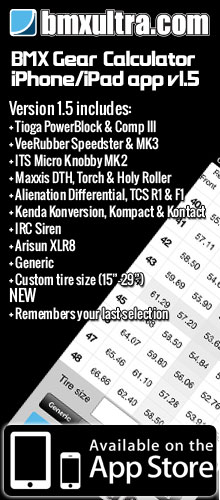Alienation BMX Tubeless Compatible System
Tubeless tires are common place for just about everything that uses a tire; cars, motor bikes, mountain bikes… pretty much everything except for BMX bikes. Don’t get me wrong, if you do a Google search for “tubeless BMX tires” you will find a heap of information from people trying to create a DIY BMX tubeless system. It’s often referred to as “ghetto tubeless”. In theory tubeless is a great idea. Firstly there’s the weight advantage from not running a tube and from conversations with mountain bikers they get away with running less tire pressure and getting better grip. On a BMX track though it’s more about reducing rolling resistance which you get from running higher pressures. More about that later.
After around two years of development Alienation are poised to release the first mainstream BMX tubeless system. It’s called the Alienation Tubeless Compatible System or TCS.
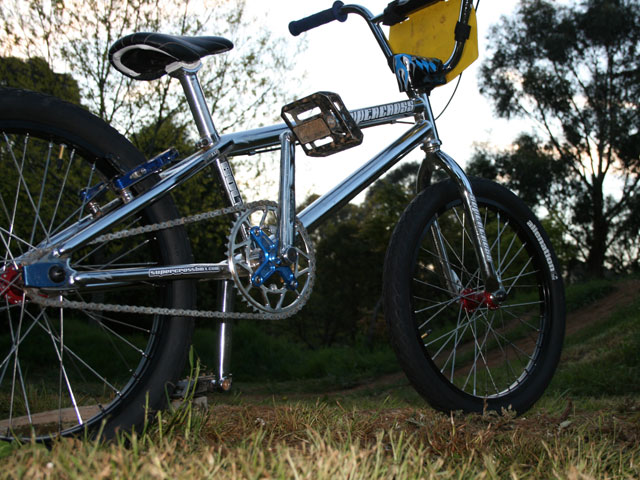
On the surface it looks pretty straight forward. The system is made up of
- Rim
- Tire
- Screw on valve
- Rim Tape
- Sealant
Although the sealant, tape and valve are quite generic it’s the rim and the tire that are key to the tubeless system. More specifically Alienation’s own on-ramp and bead lock.
Before we get into the review we need to break this all down for you, so here goes
The Malice Rim
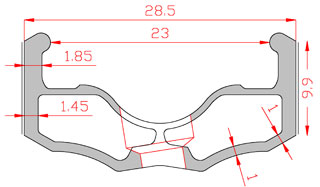 The Alienation Malice TCS rim is the first 20″ tubeless rim on the market. And it’s not just a tubeless specific rim either, it’s designed to still be compatible with traditional tires and tubes. It’s packed full of great new features. Anyone familiar with Alienation products will know that they stop at nothing to create the ultimate product the Malice rim is no exception.
The Alienation Malice TCS rim is the first 20″ tubeless rim on the market. And it’s not just a tubeless specific rim either, it’s designed to still be compatible with traditional tires and tubes. It’s packed full of great new features. Anyone familiar with Alienation products will know that they stop at nothing to create the ultimate product the Malice rim is no exception.
Check these out for features
- The TCS Malice uses the most advanced drilling pattern of any bicycle rim on the market today. The 4D drilling process creates the optimal interface between spoke and rim. This exact angle reduces binding and the need for eyelets.
- The I-Beam is distinctive, centrally located vertical support counteracts spoke loads and provides torsional rigidity.
- The new G69 material is super light with superior strength.
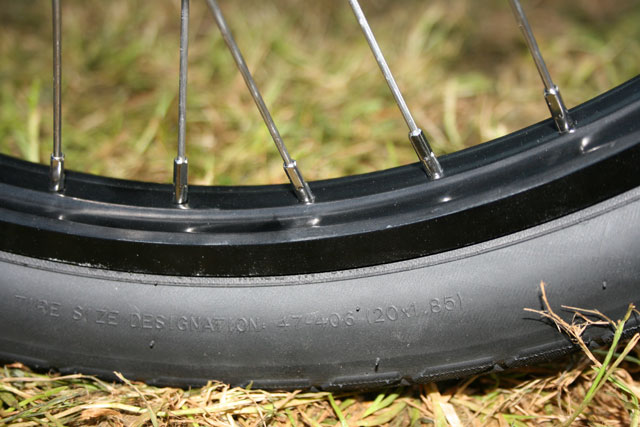
- Use: All-Round, Race
- Material: 6069 T6 (30% stronger than 6061 T6)
- Walls: Double
- Joint: Welded
- Weight: 325 g
- Diameter: 406 (20”)
- Drilling: 36
- Valve: TCS
- Sidewall: CNC’d
- ERD: 394
- Colors: Black, Dark Blue, Dark Red
| Alienation | Sun Ringle | ||||
|---|---|---|---|---|---|
| Front (Deviant) 1.75 |
Rear (Runaway) 1.75 |
Front/Rear (Malice) 1.75 |
Front (ENVY) 1.75 |
Rear (ENVY) 1.75 |
|
| 20″ | 305g | 425g | 325g | 419g | 401g |
It’s clear to see the Malice rim is amongst the lightest of rims available, it’s the strength of the 6069 T6 alloy that allows Alienation to build the lighter rim. It’s amongst the stiffest and strongest rims I have used, and over a two month period has taken a real hiding. There was a slight buckle, which was easily trued, but the rim is still perfectly round.
While the braking wall isn’t as deep as the Alienation PBR and Runaway rims it’s plenty deep enough for larger brake pads and will give you ample braking power.
The Tire
I must admit I was a little doubtful of the relevance of the Alienation Kevlar Folding Graffiti tire on a race track when I first saw it. I was told “Don’t let the tread fool ya.” So I ran with it and was surprised to find that they gripped as well as any other tire I had used. Ever! In fact I found the deeper tread pattern felt like it provided more grip in most situations.
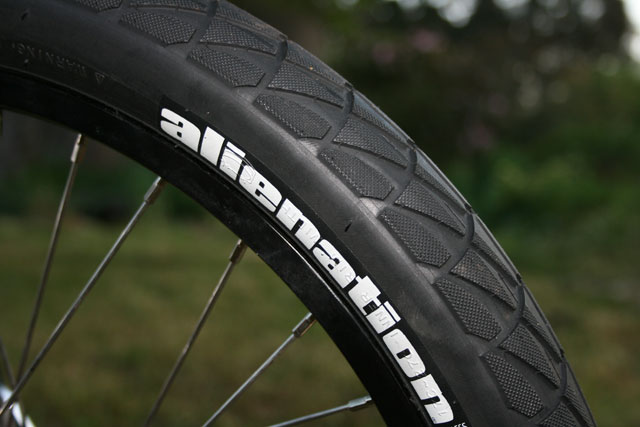
- Details: Directional pattern with excellent grip and ultra low rolling resistance. Light weight casing for a supple ride.
- Size: 20 x 1.85? or GSM 47/47
- Bead: TCS Lite
- TPI: 60
- Compound: Dual (Hard Center/Soft Outer)
- PSI: 80
- Weight: 340 g
- Color: Black
| Alienation Kevlar Folding Graffiti 1.85 |
Tioga PowerBlock S-Spec 1.75 |
ITS Micro Knobby 2 1.75 |
|
|---|---|---|---|
| 20″ | 305g | 285g | 325g |
The Graffiti tire is slightly heavier than the super light Tioga PowerBlock S-Spec. Except when you add the weight of a tube. Then the 285g jumps to 374g per tire if you are using the ITS race lite tube or a lot more if you run just standard tubes. The thing with lighter tubes is they won’t hold air as long as the TCS system does.
For now there are only 1.85 tires available it was explained to me that “during the development process we didn’t want to create many molds knowing it may or may not work so we just focused on one tire. 1.85 seemed like an all around width. It’s not too wide nor too narrow. It’s functional on both front and rear. I have two new treads we are working on that are race specific. Sizes will range from 1.60, 1.75, 1.85, 1.95 and possibly 2.1.”
To me the 1.85 tire feels right. I have been running 1.75 Tioga PowerBlock tires for a few years now and anyone who’s run them will know they are slightly oversized, noticeably bigger than the standard 1.75…probably a lot more like a 1.85.
The Valve
The TCS system uses a Presta (also known as French) type valve. It’s pretty common for floor pumps to have this valve type built into them. If yours doesn’t you could head down to your local bike shop and buy an adapter.
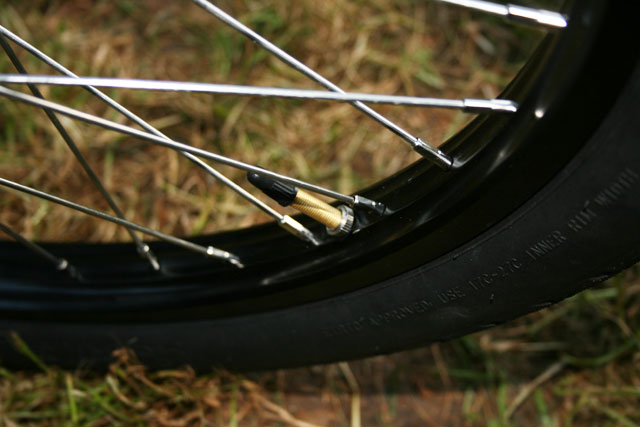
The valve has a removable core so you can install your sealant and if you aren’t used to it, you might find it more fiddly than Schrader valves (also known as American valves) that are common on car tires.
The Sealant
The sealant will seal up to a quarter inch hole (which will cover about 99% of your punctures), and it’s good to keep working for about 6 months. It’s suggested that you add an ounce per wheel every six months. If you can’t get your hands on the Alienation sealant for a top up just go hunting for some Stan’s Tire Sealant it’s said to be the best sealant around and it’s readily available.
The thing about the sealant is it will work most effectively while the wheel is rotating. If you run over a thorn or a nail and hear a leak you just keep riding and it will seal the hole in no time, losing very little tire pressure along the way. If you just stop the sealant should still work, but it will take longer and therefore you risk losing more air.
If you haven’t heard of the ice pick test, you should check out this video http://www.youtube.com/watch?v=pppClYvvjmM
Setting up the Tubeless System
There were a couple of videos put out by the The Come Up TV from interbike where Zach and Rob from Alienation showed off the TCS in depth. One of the video shows the process of installing the system from scratch, which is just as well because there are some handy hints and I’m sure I would have messed it all up.
I’m not about to say it’s simpler or as simple as installing a standard tire and tube on a standard rim, because it isn’t. The extra time required though is worth it for the additional benefits from getting it right.
The steps are familiar.
- With a built wheel apply the rim tape. Pull the tape extra tight so not to leave any bubbles. Then go back and make sure the tape is stuck down.
- You will need to punch a hole in the rim tape, make it clean, you don’t want to go losing air around the valve. A rat tail file might come in handy for this.
- Insert the valve and tighten it down. You should probably use pointy nose pliers to get it nice and tight. Remove the valve core.
- Fit the tire by hand, don’t use any tools to do this or you could cause unwanted leaks. You will need to muscle it a little so just take your time.
- Put the valve core back in the valve and pump the tire up to around 40-50psi. You will hear the tire making a cracking noise, it’s not anything to worry about, it’s just the tire bead rolling over the on-ramp and slotting into the bead lock.
- Remove the valve core and let all the air out.
- What you want to do now is get out a bottle of sealant, shake it up and put the whole lot in.
- Re-insert your valve core and tighten it right down. Again it’s a good idea to use pointy nose pliers.
- Pump up the tire to your desired pressure.
- The last step is to rotate the wheel and bounce it on a bench top or on the floor, the idea is to get the sealant moving around inside the tire. Do that for a minute or two, put the wheel in your bike and you are ready to go.
Benefits
Weight loss of around 250-500 grams is fairly impressive, but when you look at it the weight savings is rotation weight, which is far more important than static weight. You can actually feel it when you accelerate off a gate or out of a corner, it fells easier to get the bike moving.
No more punctures! This is the one I really like. Consider the 5-10 minutes to install the system an investment, because it’s unlikely that you will ever get a puncture again. So while your mates are hunting for a tube and a pump you can keep riding. Simple!
One thing that’s not so obvious is the bead lock actually keeps the tire perfectly centered on the rim. Which means no more ups and downs and twists in your tire, less for you to worry about.
So how does it ride?
I’ve heard people ask why tubeless? If the benefits above haven’t sparked your interest the system has a completely different feel to conventional tire/tubes. I run 80psi but it feels a lot higher pressure, and it’s not just me who’s said it. Others who have ridden my bike have returned saying the same thing. So I asked Zach from Alienation about it and this is what he had to say “You’re absolutely correct! This is a unique feature with the system. The ride characteristics are enhanced by removing the tube and having a standalone tire. It’s a bit indescribable and you must ride it to feel first hand.”
I’ve heard stories of ghetto tubeless failing when the tire rolls away from the rim allowing air to escape. That simply won’t happen with Alienation’s system. Once the bead is locked in it would take more than a little roll of the tire to get it off again. Besides, I don’t know about you, but I run 80psi of pressure there is no way the tire is about to roll off the rim. I know this because I used the rims for over two months that included racing, general riding, sprinting and not once did I lose any air while riding.
What does it cost?
The costs are slightly higher than traditional tire/tube set ups since you are using a sealant and the rims are a little more expensive too. But you are talking less than the price of a handful of tubes.
When will the TCS system be available to the public?
We asked Zach this question. Here’s his answer: “Spring 2013 (for the USA or Autumn for Australia.) The rims will be available within the next 45 days which is ideal as a rim only option. At 325 grams, 28.5 mm wide it cannot be beat. Even if you don’t want to jump head first into tubeless you can purchase the rim for use with your conventional tires and later on retrofit to tubeless.”
So what’s the verdict?
I’ve grown quite fond of TCS, anything else feels sluggish in comparison. It really feels like riding on rails. While it might take a little while for the race community to adapt I believe it will be the way of the future and become more important to BMX racers than clipless pedals.
Rating 20/20:
| Value for money: | 5/5 |
| Weight: | 5/5 |
| Functionality: | 5/5 |
| Looks/Finish: | 5/5 |
Comments:
- The additional cost is worth it for peace of mind, I’d pay extra to never have to fix another damn puncture
- The TCS system is lighter than conventional tire/tube systems full stop!
- Is the TCS system better than the conventional system? Heck yeah!
- With Alientation you get exactly what you pay for. Top shelf products!
Alienation are distributed in Australia by Elite Cycle Imports. For more information about Alienation check out www.alienationbmx.com.
Review by Shane Jenkins/9 December 2012

